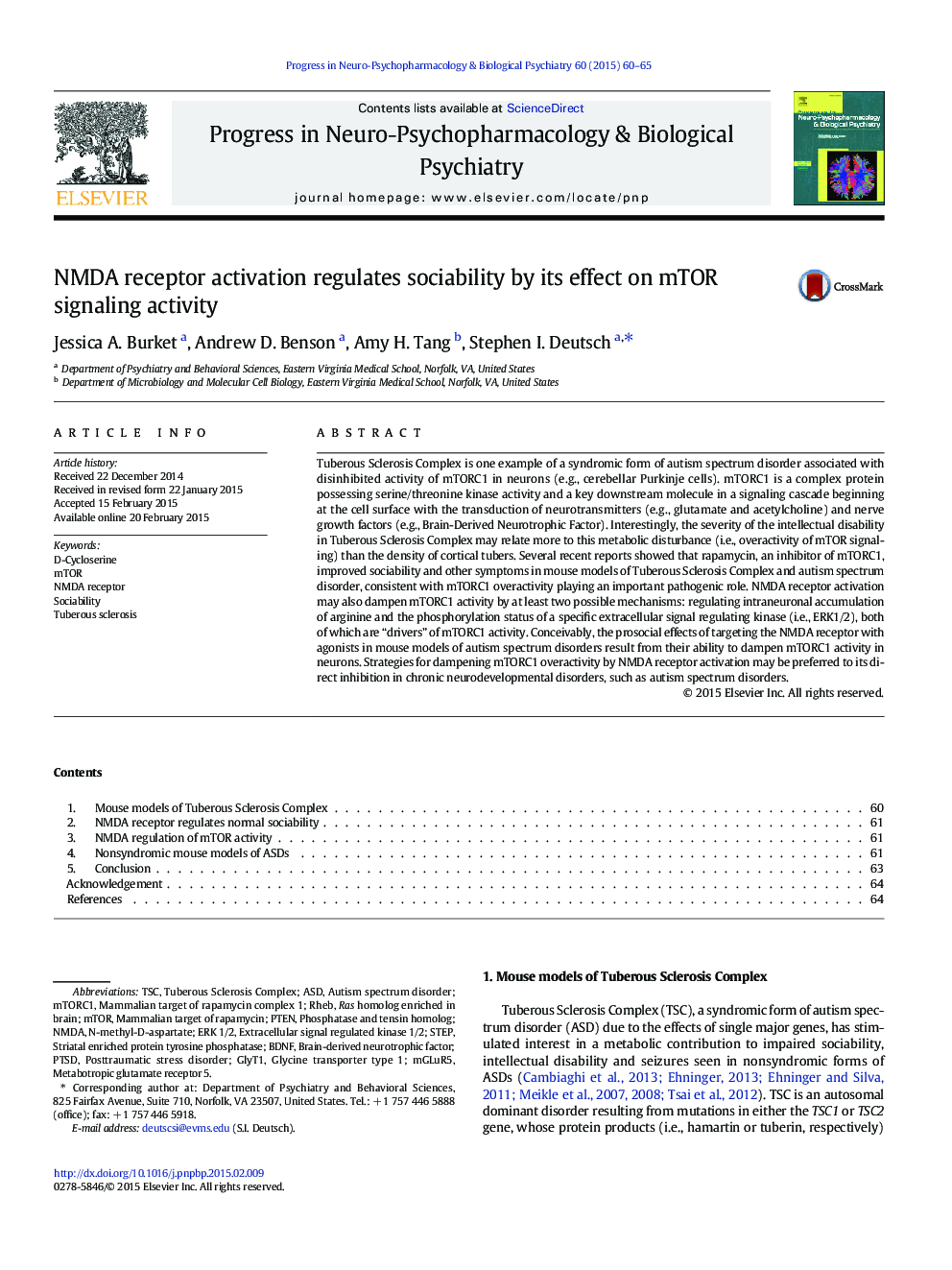| کد مقاله | کد نشریه | سال انتشار | مقاله انگلیسی | نسخه تمام متن |
|---|---|---|---|---|
| 2564733 | 1561034 | 2015 | 6 صفحه PDF | دانلود رایگان |

• Several syndromic forms of ASD are associated with disinhibited activity of mTORC1.
• Rapamycin, an inhibitor of mTORC1, improved sociability in mouse models of TSC.
• NMDA receptor-mediated neurotransmission regulates sociability in mice.
• NMDA receptor activation decreases mTOR signaling activity.
• D-Cycloserine improved sociability in the Balb/c and BTBR mouse models of ASD.
Tuberous Sclerosis Complex is one example of a syndromic form of autism spectrum disorder associated with disinhibited activity of mTORC1 in neurons (e.g., cerebellar Purkinje cells). mTORC1 is a complex protein possessing serine/threonine kinase activity and a key downstream molecule in a signaling cascade beginning at the cell surface with the transduction of neurotransmitters (e.g., glutamate and acetylcholine) and nerve growth factors (e.g., Brain-Derived Neurotrophic Factor). Interestingly, the severity of the intellectual disability in Tuberous Sclerosis Complex may relate more to this metabolic disturbance (i.e., overactivity of mTOR signaling) than the density of cortical tubers. Several recent reports showed that rapamycin, an inhibitor of mTORC1, improved sociability and other symptoms in mouse models of Tuberous Sclerosis Complex and autism spectrum disorder, consistent with mTORC1 overactivity playing an important pathogenic role. NMDA receptor activation may also dampen mTORC1 activity by at least two possible mechanisms: regulating intraneuronal accumulation of arginine and the phosphorylation status of a specific extracellular signal regulating kinase (i.e., ERK1/2), both of which are “drivers” of mTORC1 activity. Conceivably, the prosocial effects of targeting the NMDA receptor with agonists in mouse models of autism spectrum disorders result from their ability to dampen mTORC1 activity in neurons. Strategies for dampening mTORC1 overactivity by NMDA receptor activation may be preferred to its direct inhibition in chronic neurodevelopmental disorders, such as autism spectrum disorders.
Journal: Progress in Neuro-Psychopharmacology and Biological Psychiatry - Volume 60, 3 July 2015, Pages 60–65